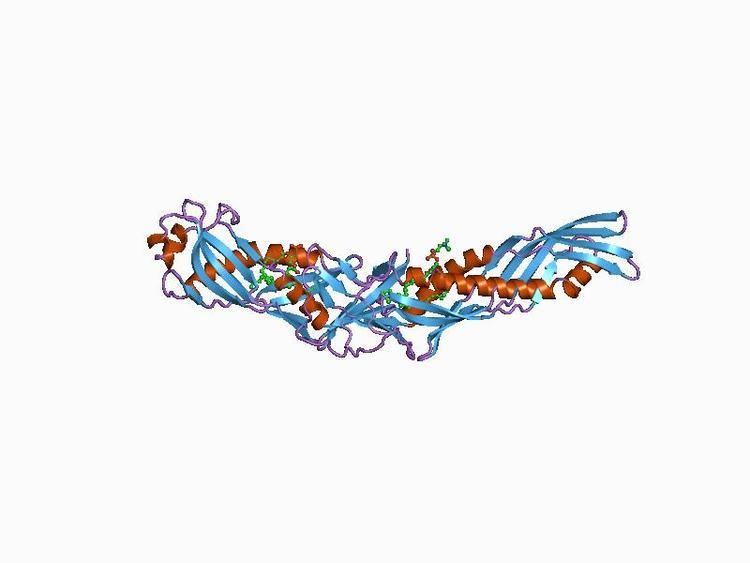Symbol LBP_BPI_CETP InterPro IPR017942 SCOP 1bp1 | Pfam PF01273 PROSITE PDOC00367 SUPERFAMILY 1bp1 | |
 | ||
In molecular biology, the lipid-binding serum glycoproteins family, also known as the BPI/LBP/Plunc family or LBP/BPI/CETP family represents a family which includes mammalian lipid-binding serum glycoproteins. Members of this family include:
Contents
- Structure
- Bactericidal permeability increasing protein
- Lipopolysaccharide binding protein
- Cholesteryl ester transfer protein
- Phospholipid transfer protein
- Palate lung and nasal epithelium carcinoma associated protein
- Human proteins belonging to this family
- References
Structure
These proteins consist of N- and C-terminal domains, which share a similar two-layer alpha/beta structure, but show little sequence identity to each other.
Bactericidal permeability-increasing protein
Bactericidal permeability-increasing protein (BPI) is a potent antimicrobial protein of 456 amino acids that binds to and neutralises lipopolysaccharides from the outer membrane of Gram-negative bacteria. BPI contains two domains that adopt the same structural fold, even though they have little sequence similarity.
Lipopolysaccharide-binding protein
Lipopolysaccharide-binding protein (LBP) is an endotoxin-binding protein that is closely related to, and functions in a co-ordinated manner with BPI to facilitate an integrated host response to invading Gram-negative bacteria.
Cholesteryl ester transfer protein
Cholesteryl ester transfer protein (CETP) is a glycoprotein that facilitates the transfer of lipids (cholesteryl esters and triglycerides) between the different lipoproteins that transport them through plasma, including HDL, LDL, VLDL and chylomicrons. These lipoproteins shield the lipids from water by encapsulating them within a coating of polar lipids and proteins.
Phospholipid transfer protein
Phospholipid transfer protein (PLTP) exchanges phospholipids between lipoproteins and remodels high-density lipoproteins (HDLs).
Palate, lung and nasal epithelium carcinoma-associated protein
Palate, lung and nasal epithelium carcinoma-associated protein (PLUNC) is a potential host defensive protein that is secreted from the submucosal gland to the saliva and nasal lavage fluid. PLUNC appears to be a secreted product of neutrophil granules that participates in an aspect of the inflammatory response that contributes to host defence.
Short palate, lung and nasal epithelium clone 1 (SPLUNC1) may bind the lipopolysaccharide of Gram-negative nanobacteria, thereby playing an important role in the host defence of nasopharyngeal epithelium.
Bacterial permeability family member A1 (BPIFA1/SPLUNC1) is an innate protein that is secreted basolaterally from healthy, but not asthmatic, human bronchial epithelial cultures (HBECs). It suppresses airway smooth muscle contractility by binding to and inhibiting the Ca2+ influx channel Orai1.
Human proteins belonging to this family
BPI; BPIL1; BPIL2; BPIL3; CETP; LBP; LPLUNC1; LPLUNC3; LPLUNC4; PLTP; PLUNC; SPLUNC2;
